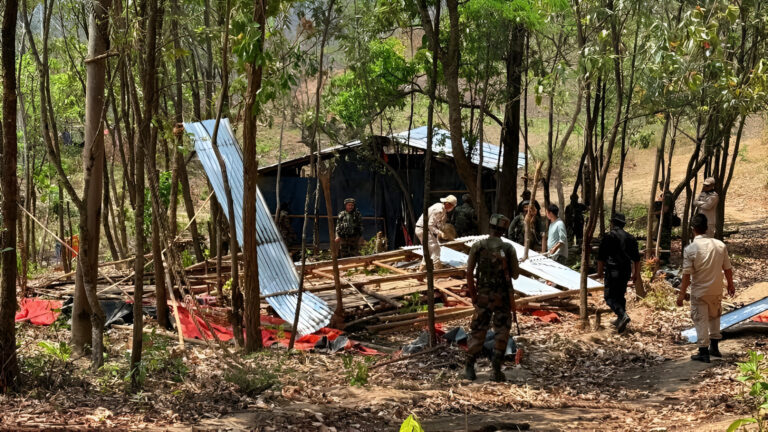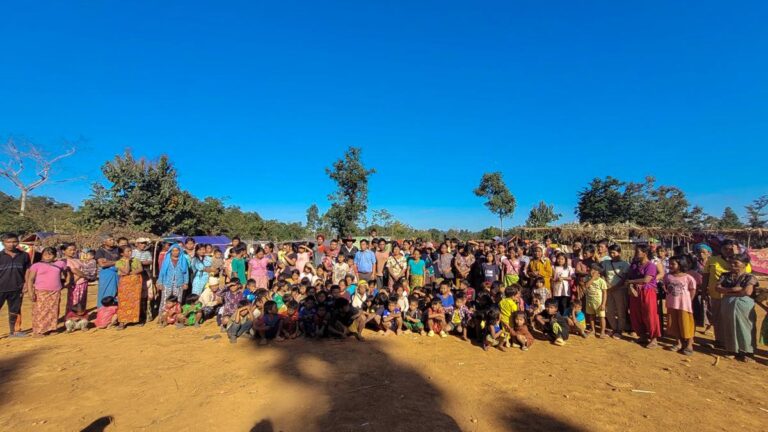Manipur NH-37 Blocked by Massive Rockslides: A Critical Update
Summary
Manipur’s NH-37 (Imphal-Jiribam Road) has been severely impacted by massive rockslides due to persistent heavy rainfall. This incident has paralyzed vehicular movement, leaving travelers stranded. Authorities are working tirelessly to clear the debris and restore connectivity, deploying machinery and rescue teams. The recurring landslides in the region emphasize the urgent need for improved disaster preparedness and infrastructure resilience
Detailed Analysis of the NH-37 Rockslide Incident
What Happened?
On November 22, 2024, a massive rockslide struck a section of NH-37, disrupting transportation between Imphal and Jiribam. The landslide, triggered by incessant rains, created a 200-meter stretch of road blockage, leaving vehicles and travelers stranded for hours. Such disruptions are not new to Manipur, a state prone to frequent landslides due to its hilly terrain and seasonal downpours.
The Immediate Impact
Travelers along NH-37 faced challenging conditions. Reports describe drivers and passengers struggling without access to basic necessities like food and water, emphasizing the vulnerabilities of those caught in such natural calamities.
Moreover, this blockage has significant economic implications, as NH-37 serves as a lifeline for transporting essential goods into the state. The disruption underscores the fragility of infrastructure in regions susceptible to climatic adversities.
Ongoing Relief and Restoration Efforts
Rescue and clearing operations are underway, with heavy machinery like excavators being deployed to remove debris. Local authorities have urged caution for residents and commuters in light of potential further landslides.
Additionally, coordination between local government agencies, disaster response teams, and local communities is pivotal to mitigate risks and restore normalcy. These operations demonstrate the resilience and resourcefulness of the affected communities and authorities, even in the face of adversity.
Why Is This Significant?
The NH-37 blockage serves as a stark reminder of the challenges faced by regions with vulnerable ecosystems. Landslides not only disrupt lives but also expose gaps in infrastructure and disaster management. It’s a call to action for policymakers to prioritize sustainable development and invest in landslide mitigation measures.
Lessons Learned and the Way Forward
1. Enhancing Infrastructure Resilience
Strengthening road infrastructure, particularly in landslide-prone areas, should be a top priority. Retaining walls, better drainage systems, and reinforced embankments can reduce the risks of similar incidents in the future.
2. Early Warning Systems
Implementation of advanced monitoring systems and early warning technologies could give authorities a critical window to evacuate at-risk populations and reroute traffic.
3. Community Awareness
Raising awareness about landslide risks and equipping communities with emergency preparedness training can help minimize casualties during such events.
4. Policy and Investment
Comprehensive policies addressing climate resilience and ecological restoration are essential. These include afforestation drives and sustainable land use practices to stabilize slopes and prevent soil erosion.
5. Collaborative Disaster Management
The rockslide highlights the importance of coordinated efforts among government bodies, disaster response teams, and local residents. This collaborative approach ensures timely and efficient responses to crises.
Conclusion
The NH-37 rockslide is a testament to nature’s unpredictability and the pressing need for robust infrastructure and disaster readiness. While immediate relief efforts are commendable, long-term solutions are indispensable to safeguard the lives and livelihoods of Manipur’s residents. This incident serves as a wake-up call, urging both authorities and citizens to work toward a more resilient future.
FAQs
1. What caused the NH-37 blockage?
Persistent heavy rains triggered massive rockslides, blocking a 200-meter section of the road.
2. Are there alternative routes available for commuters?
Currently, NH-37 is a critical link, and disruptions have made alternative routes less viable. Authorities are prioritizing debris clearance.
3. How are authorities addressing the situation?
Machinery and rescue teams have been deployed to clear the debris. Authorities are also monitoring the area for further risks.
4. Is this a recurring issue in Manipur?
Yes, Manipur frequently experiences landslides due to its geographical and climatic conditions, making infrastructure upgrades essential.
5. What measures can prevent such incidents in the future?
Investments in resilient infrastructure, early warning systems, and community awareness are key to mitigating risks.


